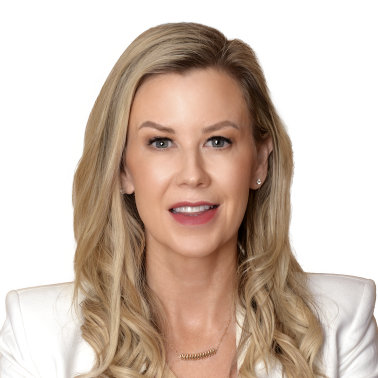Fund reserves are a hotly discussed issue at the moment because the NASDAQ has fluctuated quite a bit recently.
As a founder, one of the easiest, fastest, most convenient places to get more capital is from an existing investor. But, what some founders don’t realize is that these VCs are funding out of their reserves. So let’s break break down the mechanics of the VC fund reserves.
A venture capital fund will typically invest about two-thirds of their total fund amount in new companies. It can be up to three-quarters of their total fund, but we usually see two-thirds. For most VC funds there are no hard and fast rules. But most maintain 30% to 40% of the fund in a reserve. That means the remaining 60% to 70% is going to new capital, new companies. The reserve funds typically are used to support portfolio companies.
You then may wonder what happens to the other third? Well, it’s set aside as a reserve, and isn’t invested right away. That allows it to be invested in existing portfolio companies later on as they mature. This is a really important strategy for venture capitalists to follow, as it means they are able to consistently support their companies.
HOW ARE VC FUND RESERVES USED?
Reserve funding is used in different ways:
- To support companies doing well. The first companies that are served with these fund reserves are the VC’s best prospects; the companies that are a great investment opportunity. It’s usually really good dollar-cost average even if it’s a higher valuation in the future. If a VC knows they are in the next Uber or Facebook then, when the next round comes around, they will want to put as much of their money into that company the second time as they can. Typically, the company is raising more and more money at higher and higher valuations. If you’re a VC maintaining your pro-rata ownership percentage, you want to keep getting as much capital into those companies as possible. Even though the valuation is going to be higher, if this company is going to the moon, they will want to put more money into it.
- To fund companies needing to hit a milestone. Another reason to use those reserves is to fund a company that isn’t struggling or dying, but needs to hit either a funding milestone (they need a few more customers or need to get a product out the door) or needs a bridge to an exit. If a company needs three to four months of capital to get bought, which means the VC makes some money and gets their capital back, that’s a pretty good reason to invest more money into a company.
- Companies without an outside investor. Another way fund reserves are used is when a VC has to support a company that is doing really well and needs a second round, but may not be led by an outside investor. That support could take place in the form of a bridge round, downrounds, or everyone could price it themselves. Either way, if it is a good enough company that the venture capital firm wants to support it, they will use their reserves to help.
DO UNSUCCESSFUL COMPANIES GET RESERVE FUNDING FROM THEIR VCs?
No, when companies aren’t doing very well or having much success you will see VCs very politely sidestep the idea of investing more money. The reason for that is VCs are fiduciaries. They have a contract and an obligation to their investors, such as the limited partners, the endowments, foundations and pension funds, that requires them to put the interests of their investors first. In other words, they aren’t supposed to throw good money after bad. Venture capital firms have to be extremely careful with these reserves and they can’t just invest in a startup that’s not doing well simply because they like the founder, for example.
WHO DECIDES WHERE A VENTURE FUND’S RESERVES GO?
Given the current tough economic climate, and since venture capital funds are fiduciaries, you will see that only a portion of a VC’s investments will actually get reserves. This can create some serious political pressure inside the VC fund because everyone wants to support their own companies, since their track record defines their reputation. So using fund reserves can be very hotly debated and sometimess only the senior people in the fund get to dictate where the reserves are going to be spent.
HOW SHOULD YOU ASK A VC FOR MORE CAPITAL?
The next time you ask for more capital, there will be a lot more scrutiny, especially if your company isn’t performing very well. That’s why it’s critical to treat this ask almost like a new investment. You are likely going to have to pitch the partnership again, although you may not run through a full VC due diligence process again. You should realize you will be using one of your chips.
So, the best way to ask for more capital is to be prepared. Recognize that your partner’s reputation is on the line when you pitch, so make a compelling case that either the company is excelling, or you can see a milestone, or you can see an exit very clearly. That is the only way you will get a piece of your VC fund’s reserve.
It may be, especially if it’s a bridge situation, the last time you can ask the VC for more capital. After this, you’ll be on your own. It’s very hard to continue to fund a company three or four times, especially if good things are not happening and new capital isn’t coming into the company. VC fund reserves are very precious.
There may even be a little competition among the partners to see who gets to support their companies via the reserve funds. They don’t want to see one of their investments falter or get shut off at the spigot if they believe in it.
HOW LONG DO FUND RESERVES HAVE TO LAST?
These reserves typically have to last quite a long time. Most venture capital funds are 10-year funds, and they usually have at least two automatic, one-year extensions – if not more. This means you are looking at around 10 to 12 years, even up to 14 years in some cases, where the VC needs to be able to support these companies.
WHAT HAPPENS IF A VC RUNS OUT OF RESERVES?
If a VC can’t support their companies because they are out of fund reserves then they are at risk of being completely washed out in a pay-to-play round. Essentially, this means if they are unable to put new capital into a company they can get washed out and lose their entire ownership position. That makes using fund reserves really high-stakes decisions. You can check out our video on pay-to-play rounds to learn more.
FOUNDERS NEED TO UNDERSTAND RESERVES
When times are good and investment dollars are flowing, founders don’t have to know too much about reserves. In 2020-2021 the market was so hot that people didn’t really worry about reserves. A VC would invest that two-thirds of the fund and then go out and raise another fund
But in 2022 the market has slowed down, and fund reserves are very important, hotly contested, and highly desired by the portfolio company. It’s much harder to get those second and third checks, and startups are competing with other startups in the VC’s portfolio for those reserve dollars. VCs will perform more due diligence, and scrutinize their portfolio companies much more closely. So founders need to control their spending carefully, and be very conservative on using venture capital. It may be tougher to get more.
If you have any questions on fund reserves, startup investing, startup accounting, taxes, or venture capital please contact us. You can also follow our YouTube channel and our blog for information on accounting, finance, HR, and tax for startups!











